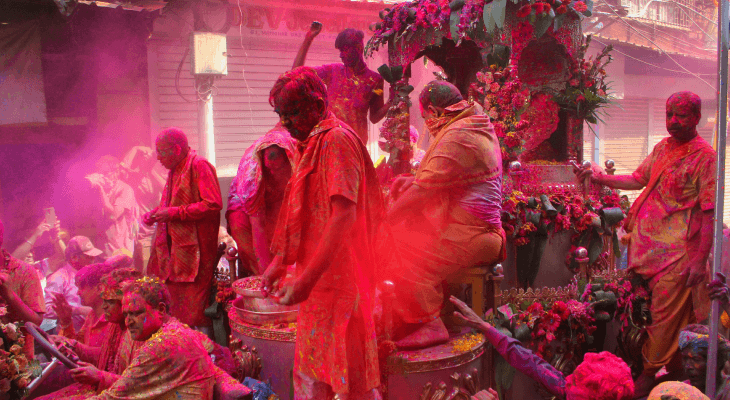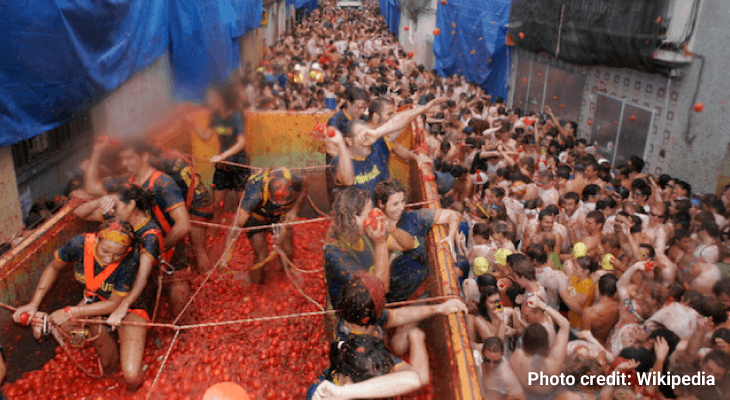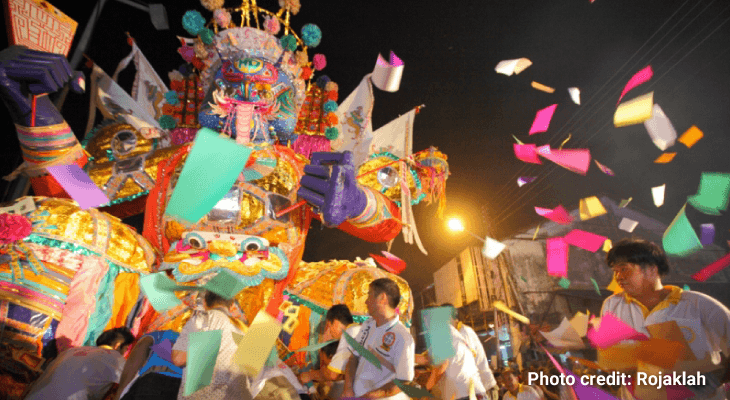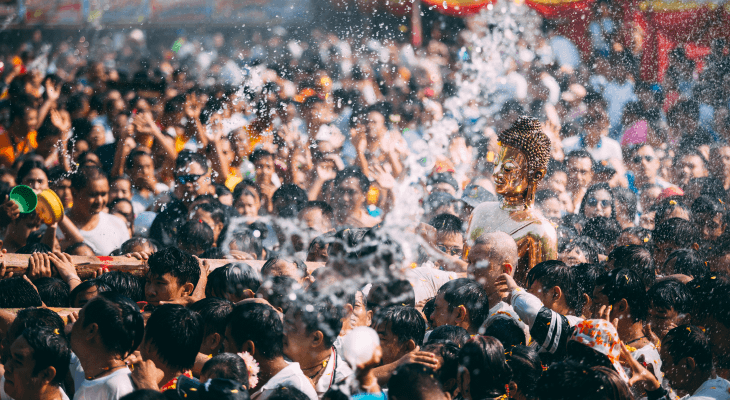7 Surprising Truths Behind Popular Celebrations Around the World
Why is Santa Claus associated with Christmas? Is St Valentine the pioneer of Valentine’s Day? We reveal the truths behind some of the popular celebrations we have today.
Updated 19 Aug 2021

From New Year to Christmas and even our occasional King’s birthday that grants us a day off, it’s no surprise that everyone loves holidays. But when you think about your favourite holiday, do you know the story behind it? Even if it's celebrated with parades, barbecues and gifts, they may have a surprising twist that you probably didn’t expect.
In this article, we reveal 7 popular celebrations and the origins behind them that will probably surprise you.
#1. Christmas Day: Who is Santa Claus?

Christmas is a religious holiday for Christians to celebrate the birth of Jesus. The English term of Christmas is literally translated to mass on Christ day. So, if Christmas is a religious holiday, who is Santa Claus and why does he play such a pivotal role?
The jolly man in red who brings toys to children is actually based on a real person, a monk named St Nicholas from the 3rd century. St Nicholas was thought to be the patron saint of children and was admired for his kindness and piety. He would donate his wealth to those in need and travelled across countries to help the sick and poor. His popularity spread worldwide and people all over the world would throw a feast on his death anniversary in remembrance of his kindness.
His name Santa Clause was coined after his Dutch nickname Sinter Klaas, a shortened form of Sint Nikolaas. It started in America in the 1900s when Santa Claus was equated with sleighs and reindeers bringing gifts to people on Christmas through stories and caricatures.
#2. Valentine’s Day: Is St Valentine the pioneer of Valentine’s Day?

Valentine’s Day, the most romantic month of the year with candies, flowers, gifts and groups of singles wishing it would be over — and all in the name of St Valentine. But who is this mysterious saint and how did this romantic celebration come about?
Well, the origin of Valentine’s Day wasn’t because of St Valentine, instead, it was invented by English poet, Geoffrey Chaucer in 1382. It was his best-known dream-vision poem, Parlement of Foules that created the idea of romance and love based on the engagement of King Richard II to Anne of Bohemia. The poem refers to February 14 as the day birds (and humans) come together to find a mate. This makes him the person responsible for the traditions behind Valentine’s Day!
The saint that’s equated to the Valentine’s Day we celebrate today is the St Valentine of Rome, a name given to martyrs worthy of the title or priests that went through ordination. That’s because Valentinus is Latin for worthy or powerful — a moniker popular between the second and eighth centuries A.D.
DID YOU KNOW
You can actually celebrate Valentine’s Day more than once a year! Since there are more than one St. Valentines on the Roman Catholic roster, you can choose to celebrate each saint multiple times each year.

#3. Holi Festival: Why are there colours everywhere?

Holi, the festival of colours is considered to be one of the most vibrant Hindu festivals. Celebrated widely in India, people would play with colours to welcome the beginning of spring as winter ends and to celebrate the triumph of good over evil. So, how did it start?
Legend says that it was about an evil king’s obsession with power where he’d force his subjects to worship him. To his dismay, his son, Prahlada continued to be an ardent devotee of the Hindu deity Lord Vishnu. The king then plotted his son’s death with the help of his sister, Holika, who was immune to fire. She tricked Prahlada to sit in a pyre with her. When the pyre lit, Prahlada’s devotion to Lord Vishnu allowed him to walk away unscathed while Holika was burned to death.
Due to this, large pyres will be lit to signify the burning of evil spirits on the eve of the festival. And on the day of Holi, people will take colours to the streets and splash them on others. Each colour carries different meanings. For instance, red symbolises love and fertility, blue represents the Hindu God Krishna and green is for new beginnings.
Apply for university with EduAdvisor
Secure scholarships and more when you apply to any of our 100+ partner universities.
Start now#4. La Tomatina: Why do people throw tomatoes at each other?

Imagine a festival where you throw tomatoes to people for fun — sounds wacky, doesn’t it? The people of Spain don’t think so. La Tomatina has become a long-standing tradition celebrated in Buñol every year and thousands of people from every corner of the world would come to take part in a mass tomato-fuelled food fight.
La Tomatina initially started from a street brawl in 1945 during a parade. It was said that a group of young people accidentally knocked a mascot over and made the person really mad. The group retaliated and a small fiasco occurred involving a stall selling tomatoes. This eventually led to the townspeople throwing tomatoes at each other and huge food fights broke out!
Because of its popularity, you’ll need to purchase a ticket costing €10 (RM49) to participate in what is known to be the “Worlds Biggest Food Fight''.
#5. Hungry Ghost Festival: Why do people prepare meals for ghosts?

With tales and taboos surrounding this festival, it’s no surprise that the Hungry Ghost Festival is considered to be one of the creepiest festivals to celebrate — even creepier than Halloween. However, the real story behind it isn’t that scary.
According to legend as told from ancient China, it started with a monk named Mulian who sought the help of Buddha to help his mother in the afterlife. The mother was among the hungry ghosts who couldn’t receive food from the world of living. Buddha instructed Mulian to make offerings of special prayers and food to the monks and in return, this would help end his mother’s hunger.
This led to the significance of the Hungry Ghost Festival. Today, Buddhist and Taoist believers would appease their ancestors and wandering souls by offering food and prayers in altars as the gates of the afterlife open every 7th month in the Lunar calendar.

#6. Cinco De Mayo: Is it to celebrate Mexico’s Independence Day?

You’re probably familiar with Cinco de Mayo — we’re talking parades, mariachi music, Mexican food and margaritas! It’s a popular occasion that’s widely celebrated every 5th of May in Mexico and the USA. So, what really happened on the 5th of May and what are they celebrating?
For starters, Cinco de Mayo is not Mexico’s Independence Day. Instead, Cinco de Mayo is celebrated to commemorate the Battle of Puebla in 1862 where an outnumbered Mexican troops managed to defeat an army of French soldiers during the French occupation in Mexico. Despite having failed to hold the French from taking over Mexico City, the victory became a symbol of Mexican resistance against French imperialism.
Apart from celebrating the resistance, it’s also a celebration of Mexican culture and heritage and is considered to be one of the largest festivals in the USA.
#7. Songkran Festival: Is Songkran just a massive water party?

Held in mid-April in Thailand, Songkran marks a New Year in the Buddhist calendar. To celebrate, the people of Thailand would turn Songkran into the biggest water festival where they’ll be water splashing everywhere. So, how did this come about?
Songkran is actually a religious festival that is held to pay gratitude to elders, welcome new beginnings and spiritual cleansing. It originally began with the blessings and prayers for Buddhist monks with gifts or food. As part of the cleansing process ritual, the monks will be trickled with scented water and the locals would collect them and bring them back to their loved ones. Because the water is believed to be blessed, they would rub and pour it over one another.
Water is believed to be an important element of cleansing, thus the act of splashing water at each signifies purification. So, if you plan on taking a trip to Thailand during Songkran, be prepared to bring extra clothes!
There you have it — the truths behind the popular festivals you know! Do any of them surprise you? If you know any origin story about other popular celebrations around the world, share with us in the comment below.






